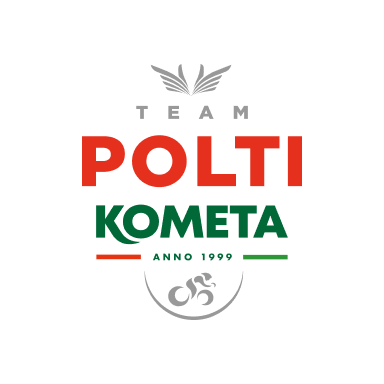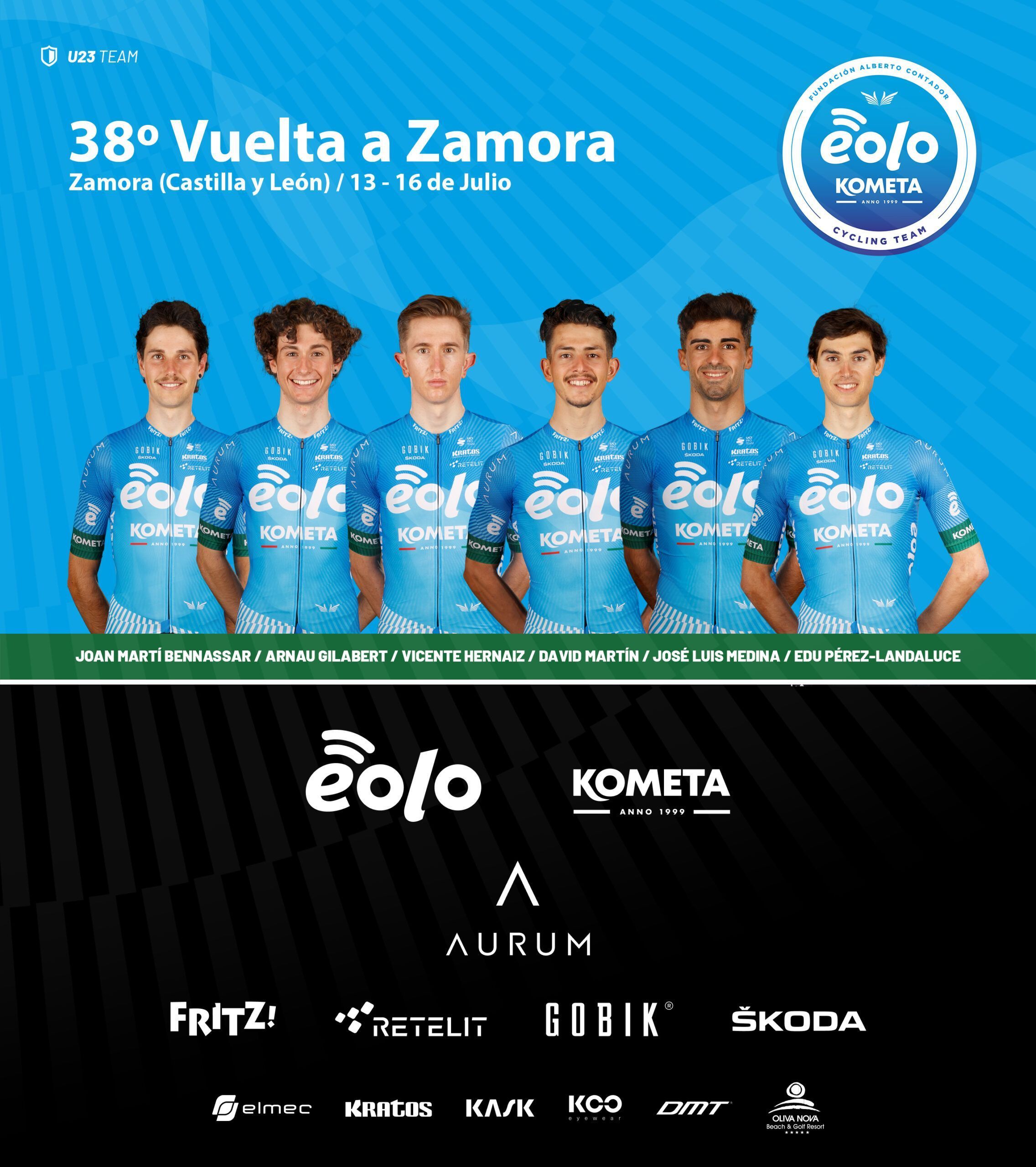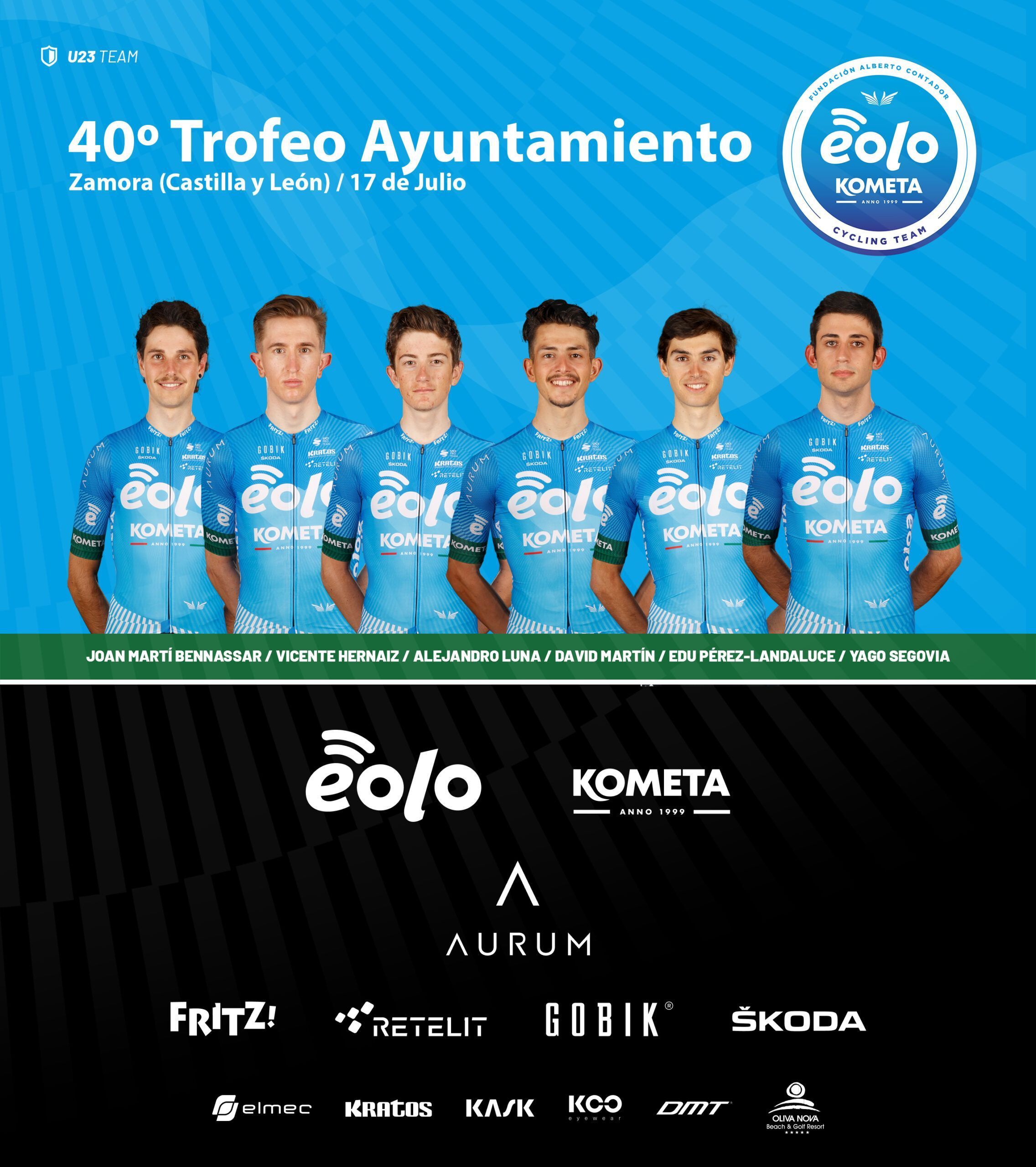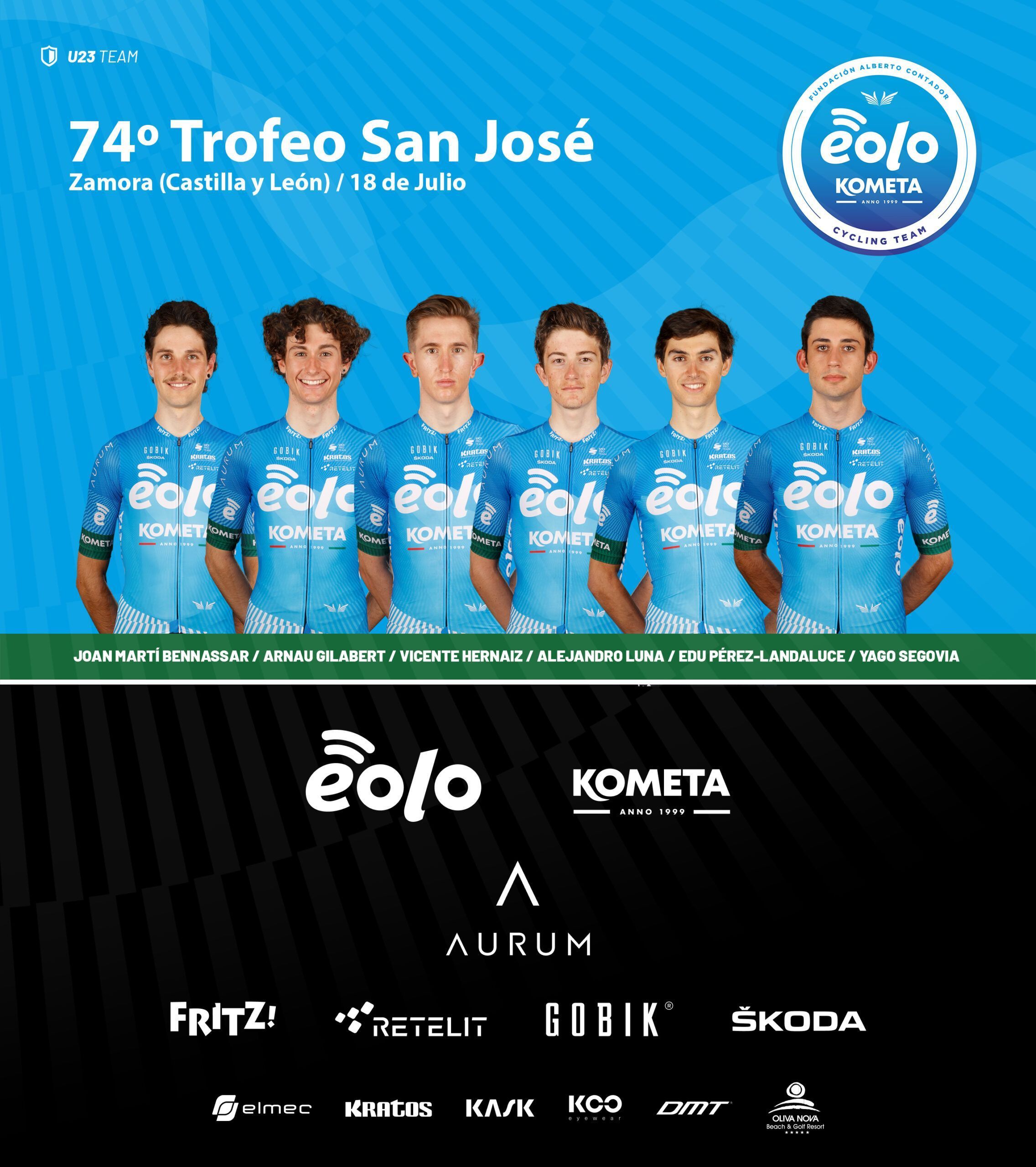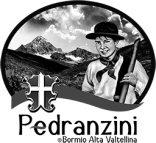Zamora’s big cycling week returns
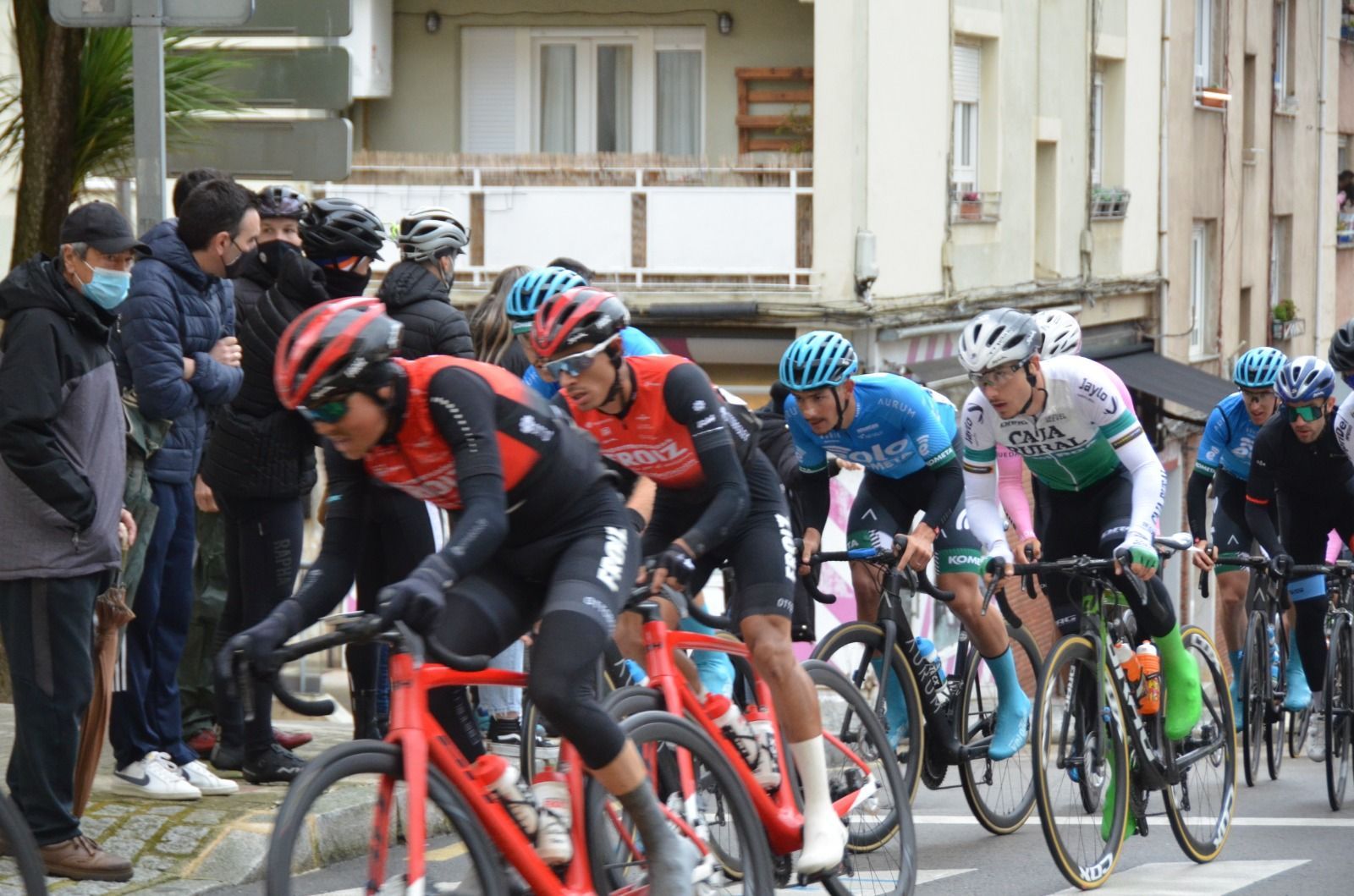
38º Vuelta a Zamora
From 13 to 16 July
40º Trofeo Ayuntamiento de Zamora
17th July
74º Trofeo San José
18th July
It is part of the human condition: to forget the bad experiences in order to keep only the good ones; to keep in mind the good moments, the great moments of happiness and joy. This time last year, cycling in the amateur field was making a comeback thanks to the efforts of the organisation of the Vuelta Ciclista Zamora, an entity which, after much effort and hard work, put on the table the provincial round, the Trofeo Ayuntamiento de Zamora and the Trofeo San José in a week of exciting cycling. The whole amateur cycling family thanked the commitment of the team led by Manuel Campesino for what they had been able to give us. These lines serve once again as a thank you for this past work and as a foretaste of what is to come. In 2021 the great Zamora cycling week returns with the same format, although with different routes.
The great Zamora cycling week will share days with another important competition in the year of the U23 structure of the Foundation, the Giro del Valle d’Aosta, so that in 2021 this participation is also an organisational challenge for the structure. The Cantabrian Guillermo Gutiérrez, director of the junior squad, and Félix García Casas, sports manager of all the teams, will lead an expedition made up of eight cyclists. Six of them will compete in the Vuelta a Zamora: Joan Martí Bennassar, Arnau Gilabert, Vicente Hernaiz, David Martín, José Luis Medina and Edu Pérez-Landaluce. For Saturday, both Alejandro Luna and Yago Segovia will join the team, replacing Gilabert and Medina. For the Trofeo San José, formerly Trofeo Iberdrola, the team will defend number 1 with Joan Martí Bennassar, Arnau Gilabert, Vicente Hernaiz, Alejandro Luna, Edu Pérez-Landaluce and Yago Segovia.
Ahead, as far as the Zamora round is concerned, a varied route that maintains certain signs of identity: the opening time trial, the demanding final stage with a short trip through Galician soil, the winding terrain of the regions of Aliste and Tierra de Tábara and Alba where it is more than likely that the wind can make its appearance… The Trofeo Ayuntamiento, for its part, repeats the same proposal of 2020: a route of less than 85 kilometres, an invitation to a high pace from the initial flag, which has in its second half a small chain of climbs to break a mass sprint. Finally, the historic Trofeo San José will once again offer a very demanding and selective route, a breeding ground for brave riders in good shape and strong teams.
Vicente Hernaiz, from Valladolid, is one of the most outstanding riders on the amateur scene in Castilla-León and in 2020 he raised his arms in the Trofeo San José after an outstanding and brilliant performance: “Other years we would have the Vuelta a León, the Vuelta a Palencia… This year the Vuelta a Zamora remains in some way the only big tour in the region. And now in summer it is the big objective of the whole peloton, without a doubt. On paper it may be a little less hard than in previous years, when there was one more stage, but the layout is still very similar. The stage finishing in Benavente will be a day of fans. It is not very complicated in terms of the route, but the wind is a regular and it always blows from the south. It’s a classic. It’s going to be an interesting day. The next day will be a really leg-breaking stage where we’ll be going flat out from the start. The positioning will be important; it will be a stage with a lot of tension, with a lot of narrow passages through the villages… It’s a day that will be similar to the stages of the Tour of France at Brittany these days, apart from anything else. I’ve done the last stage many years and it’s a very tough stage. Not because of the pass itself, but because you’ve been climbing for a long time. They are short but tough climbs, with gradients of up to 23% at some points. This time there are not two laps like in other years, so the last climb will be the deciding factor and it is easy for twenty riders or so to arrive and take the chance to take part in the sprint”.
Hernaiz also presents the next two races, the Trofeo Ayuntamiento de Zamora and the Trofeo San José. “The first one, for all those who are not going to compete for the victory, I would call it an active rest day. The terrain is very hilly, there are narrow passes, passes through villages and also open areas with air that can make the race very interesting. A breakaway of about twenty or thirty riders could be made halfway through the course and that’s a number that could fight for the victory. The Trofeo San José is a race without a flat metre, without rest. The whole day you are in the air and the whole day you ride with a lot of tension. In the end there are just over 2,000 metres of elevation gain, which is not really that much on paper, but there is no race like it. There is no respite. There is no professional race to compare it to, but it can be compared to the final part of a race in the Ardennes. As a decisive point, I would highlight every descent to a dam: it’s very important to be in position because on the next climb the race stretches a lot. And more than the weather, the weather in spring or now in summer, I would emphasise the fact that at the end you have been racing for six days. It’s a frenetic race where you don’t stop and you’re going to block all day”.
38º Vuelta a Zamora.
13th July: Toro – Toro (2.8 km ITT).
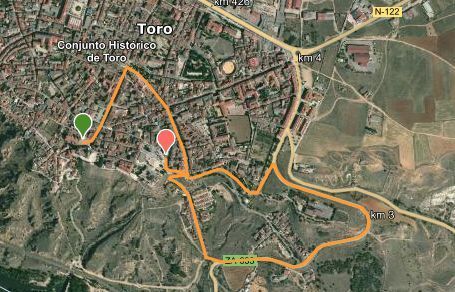
14th July: Valcabado – Benavente (149.5 km).

15th July: Fonfría – Riofrío de Aliste (142.8 km).

16th July: Camarzana (Villa Romana de Orpheus) – Lubián (118.4 km).
40th Trofeo Ayuntamiento de Zamora.
17th July: Zamora – Zamora (82 km).
74th Trofeo San José.
18th July: Ricobayo – Muelas del Pan (155 km).
